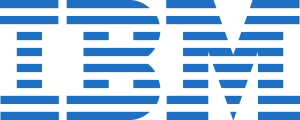Colocation vs. Cloud in 2025: What’s Best for Dev Teams?
As cloud-native development continues to evolve, DevOps teams face a crucial decision: should they deploy in the public cloud, or colocate infrastructure in a third-party data center? While cloud computing offers scalability and convenience, colocation brings performance, control, and cost predictability. In 2025, this decision isn’t binary—it's strategic.The rise of hybrid environments, AI/ML workloads, edge computing, and tighter security requirements is reshaping how development teams think about infrastructure. This blog breaks down the key differences between colocation and cloud, explores use cases where each excels, and offers guidance on how DevOps teams can make the right call for their needs.What Is Colocation?Colocation (or "colo") is the practice of renting physical space in a third-party data center to house your own servers and hardware. You manage the hardware; the provider supplies the power, cooling, connectivity, and physical security.Colo facilities often come with robust network options, interconnection ecosystems, and 24/7 support. Think of it as your data center, without having to build or maintain the building.What Is Public Cloud?Public cloud services like AWS, Azure, and Google Cloud offer on-demand infrastructure and platforms. Resources are virtualized, shared, and metered. Dev teams get instant provisioning, flexible scaling, and access to advanced services without managing physical infrastructure.Cloud is excellent for rapid experimentation, elastic workloads, and services like databases, machine learning, and analytics.Comparing Colocation vs. Cloud: Key Factors for DevOps TeamsWhen evaluating colocation and public cloud, DevOps teams should consider several critical infrastructure factors, including control, performance, scalability, cost, and security. These elements directly impact the speed, reliability, and flexibility of development pipelines.Controlis one of the most significant differentiators. Colocation gives teams complete ownership of the hardware and network stack. You can configure servers, firewalls, and switches precisely to your needs. In contrast, public cloud platforms abstract much of this control, offering pre-configured services that limit how deeply teams can tune the infrastructure.Performancealso diverges between the two. In colocation environments, bare-metal servers deliver consistent and predictable performance, ideal for workloads sensitive to latency or processor noise. Cloud instances, however, often share underlying resources with other tenants, making performance more variable due to virtualization overhead and resource contention.Scalabilityfavors the cloud. Public cloud environments allow teams to scale infrastructure almost instantly—spinning up new instances or services in minutes. Colocation, on the other hand, involves procuring and installing physical hardware, making it more deliberate and time-consuming to scale.Cost structureis another major consideration. Colocation typically involves higher upfront capital expenditures (CapEx) but offers predictable operating expenses (OpEx) over time. This can be advantageous for stable, long-term workloads. Cloud follows a consumption-based OpEx model, which is flexible but can become expensive as usage scales or if resources are not tightly managed.Securitydiffers in implementation and responsibility. With colocation, organizations control the full stack—hardware, software, and physical security—allowing for tighter control and isolation. In the cloud, a shared responsibility model means the provider handles infrastructure security, while customers secure their applications and data, requiring trust and vigilance.Latencyis often lower in colocation, especially for edge deployments located close to end-users. Cloud latency can vary depending on the chosen region and service architecture, which may affect performance for real-time applications.From aDevOps toolingperspective, colocation integrates well with standard infrastructure-as-code (IaC) tools like Terraform, Ansible, and monitoring platforms like Prometheus. However, public cloud platforms offer tightly integrated, native DevOps services—such as CI/CD pipelines, serverless computing, and monitoring suites—that can accelerate deployment.Finally,compliancerequirements can tip the scales. Colocation is often favored in industries with strict data residency, air-gapping, or audit requirements, thanks to its physical isolation. Public cloud environments can still meet regulatory standards, but doing so demands diligence in selecting certified providers and ensuring configurations align with compliance mandates.When Colocation Makes Sense for Dev Teams1. High-Performance and Consistency NeedsAI training, rendering, simulation, and other performance-sensitive workloads often run better on dedicated servers. Colo eliminates noisy neighbors and hypervisor overhead.2. Cost Predictability at ScaleLong-term workloads may be cheaper to run on owned hardware hosted in colo, especially if optimized for power and density.3. Data Sovereignty and ComplianceHeavily regulated industries (e.g., finance, healthcare, government) may require physical isolation, audit trails, and strict data residency controls that are easier to enforce in a colo model.4. Edge DeploymentsColo facilities in regional markets enable low-latency access to users. This is valuable for content delivery, gaming, IoT, and real-time analytics.5. Custom Hardware RequirementsSome DevOps teams need specific GPU configurations, storage setups, or networking hardware that cloud providers don’t offer.When Public Cloud Wins1. Rapid Prototyping and Dev/TestSpin up environments in minutes, run tests, and tear them down without touching a data center. Ideal for agile teams and frequent iterations.2. Elastic ScalingWhen traffic spikes, cloud lets you scale up without provisioning physical servers. This is perfect for SaaS applications and unpredictable workloads.3. Advanced Cloud ServicesPublic clouds offer a vast ecosystem of managed services—from Kubernetes and serverless to AI/ML APIs and global CDN networks.4. Global ReachDeploy applications closer to users with cloud regions across continents. Great for multi-region applications and latency-sensitive content.5. Smaller Teams and StartupsStartups with limited staff can benefit from offloading infrastructure management to the cloud, allowing them to focus on core development.Colocation + Cloud: The Hybrid OptionMost mature DevOps organizations adopt a hybrid approach:Dev/test in the cloudProduction in colocationBackups and DR in cloudEdge compute in regional colo sitesHybrid architectures offer flexibility, cost savings, and the ability to leverage the best of both worlds.Tools to Manage Hybrid Deployments:Terraform: Automate infrastructure across cloud and on-premAnsible: Manage configurations for both environmentsKubernetes: Unified container orchestrationArgo CD / Flux: GitOps for hybrid clustersEquinix Fabric / Megaport: Connect cloud to colo with low latencyReal-World Example: Media Streaming PlatformA video streaming company uses:Colo for storing petabytes of high-res video contentCloud for transcoding and analyticsEdge colo for content delivery near usersThis hybrid setup optimizes storage costs, processing performance, and user experience.Best Practices for Dev TeamsAssess Workload Types: Classify based on performance, latency, and scaling needsUse IaC Everywhere: Abstract differences with Terraform and Helm chartsStandardize Monitoring: Use tools like Prometheus and Grafana across environmentsPlan for Portability: Avoid hard dependencies on one providerBuild for Failure: Design systems to fail gracefully, regardless of environmentIn 2025, the question isn’t "cloud or colocation?" It’s "how do we best combine them?" For DevOps teams, choosing between cloud and colo depends on application architecture, cost structure, and operational goals.Colocation offers power and control. Cloud delivers speed and scalability. Together, they form a powerful, flexible foundation for modern software delivery.Evaluate your workloads, embrace automation, and stay agile. That’s the blueprint for DevOps success in a hybrid world.
























